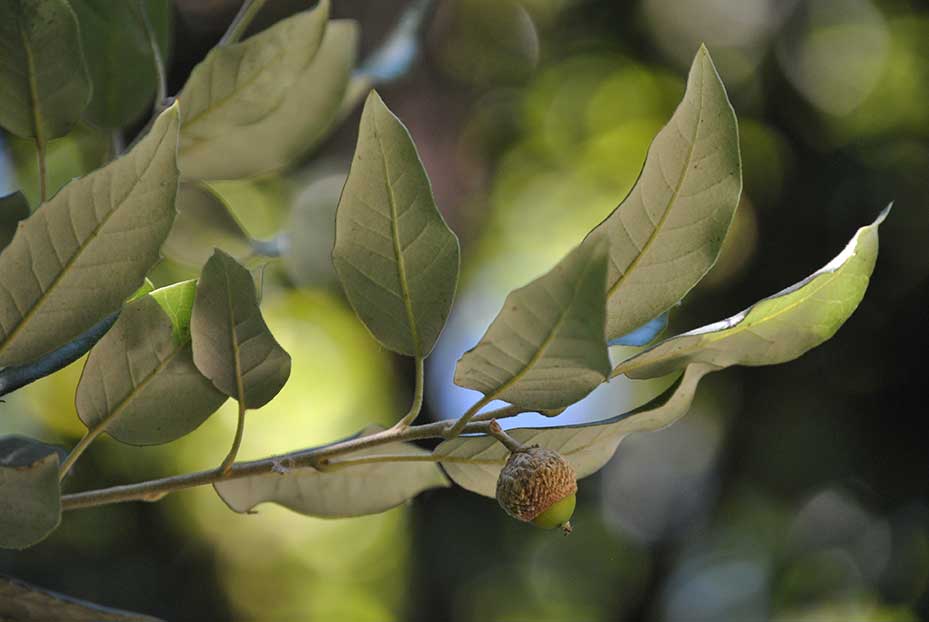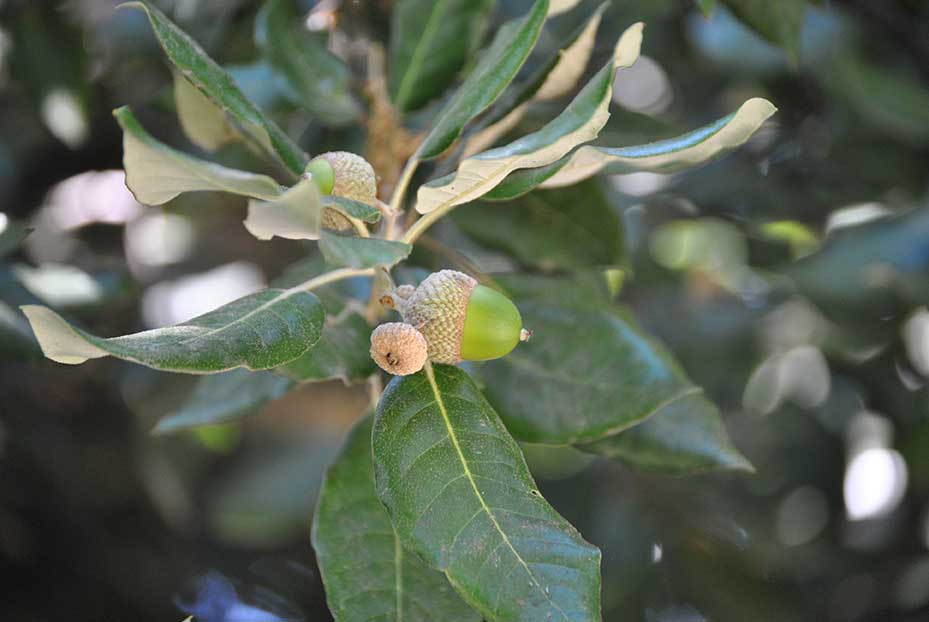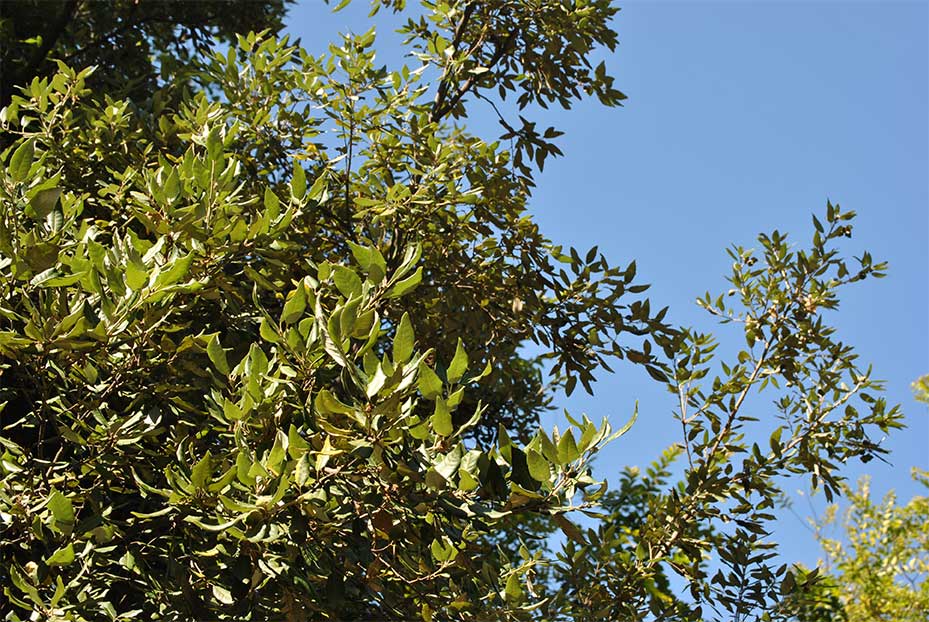
Holm Oak
Quercus rotundifolia or Quercus ilex
Family and description
Member of the Fagaceae family, the holm oak is a persistent oak tree that can reach a height of up to 12 m, with a broad, dense and rounded crown with a diameter of up to 25 m.
The leaves are alternate, simple, elliptical, thick, coriaceous, with smooth or spiny edges and are covered in a grey felt on the underside.
Flowering occurs between March and April. The male flowers are yellow and form catkins. The grey-green hairy female flowers give way to small acorns in summer.
Its fruit, the acorn, has a thimble-shaped dome covered by small, almost flat scales.
Origin and habitat
It is the most common tree in southern Portugal. Originally from southern Europe, it is a spontaneous tree in almost the entire Mediterranean Basin. It is located in woods and evergreen scrublands of Mediterranean climate, often as the dominant species. It supports dry sites and all types of soil, being more prevalent in the interior of the country.
Uses and curiosities
The holm oak is one of the trees used in montado. The montado is a very common agro-forest-pastoral system in the Alentejo, being an ecosystem of human origin that brings together pastoralism, agriculture and forest.
This tree is legally protected, by Decree-Law no. 169/2001 of 25 May.
Of all the Quercus species, the holm oak is the one that produces the sweetest acorns, traditionally made into acorn flour to mix with wheat and other bread-making cereals. Roasted and ground acorns are also used as a coffee substitute. Perhaps because they have traditionally been used to feed highland pigs, the use of acorns for human consumption has been declining over the last few centuries but is now slowly being resumed, particularly as a nutritional alternative for people with gluten intolerance. According to the Portuguese Nutrition Association, acorns have a high nutritional value, are rich in fibre and protein and have a lipid profile similar to olive oil. It has important antioxidant compounds and may be a nutritional “alternative” for gluten intolerant people.

